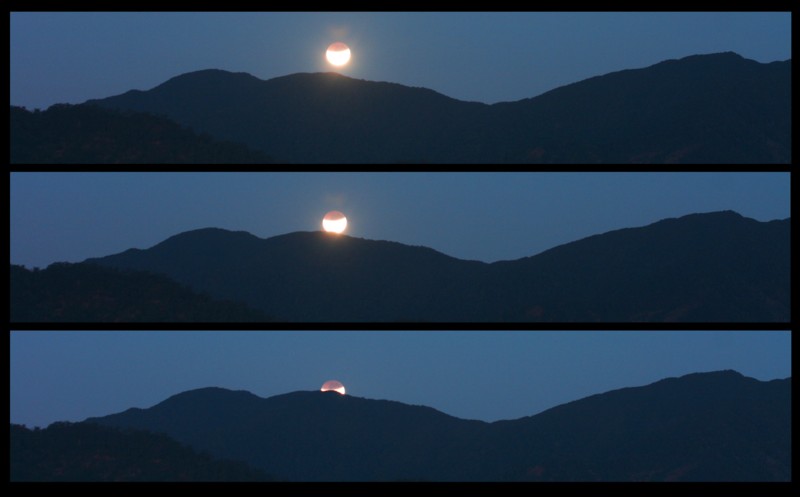

Lunar Eclipse 'Down Under' by Joe Brimacombe
[/caption]
If you read this week’s SkyWatcher’s Forecast, then you knew several areas of the world were in for a partial lunar eclipse event. While the Moon basically just did a glancing pass through the umbral shadow, the effect was still dramatic and I was hoping that at least one photographer out there would have a picture and story to share!
As luck would have it, one of our favorite AORAIA imagers, Joe Brimacombe was watching from his apartment in the city center in Cairns, Queensland, Australia. To the west: is the start of the Great Dividing Range – an 800 m plateau that extends almost to Melbourne and to the east – the Great Barrier Reef and the Coral Sea. But, this isn’t the outback, this is the city. When Dr. Brimacombe isn’t practicing anaesthesiology… Joe does a lot of imaging from the roof of his eight story apartment building.
Says Brimacombe: “Imaging the partial eclipse from Cairns was not easy as twilight was underway before the umbral phase began with the moon always less than 15 degrees above the horizon. To make the best of it I used four imaging systems.” While all of the shots were unique and incredibly beautiful in their own way, the one I chose to share “was done with the 70-200 telephoto – shows the last 3 minutes before setting and the colors have not been adjusted.”
In the hours just before dawn in Australia, the was Moon quietly slipping into the Earth’s penumbral shadow, gently changing its coloration. During maximum, about two-thirds of the Moon immersed into the deeper shadow cone called the umbra, causing the darkening you see in these outstanding photographs. Part of the beauty of the event was the timing at which it happened. For Austalia, the event was at moonset, while for Western Europe, the United Kingdom and South Africa, the event was occuring at moonrise. The very best time and place to be was 9:24:49 p.m. Saturday evening in Cairo, Africa. Even though the last eclipse of 2008 is now over, let’s take a lesson from the event.
For SkyWatcher’s who live in the city – take heart! Sometimes practicing astronomy can be just as easy as taking the elevator to the roof. From there you can easily study solar and lunar activity and even the bright planets. While metropolitan lighting can obscure most starry vistas, about the only thing that can obscure moonlight is an eclipse! Just ask Dr. Joe…
For decades cosmologists have wondered if the large-scale structure of the universe is a fractal:…
A current mystery in astronomy is how supermassive black holes gained so much heft so…
The black hole information paradox has puzzled physicists for decades. New research shows how quantum…
In April 2019, the Event Horizon Telescope (EHT) collaboration made history when it released the first-ever…
Almost every large galaxy has a supermassive black hole churning away at its core. In…
Through the Artemis Program, NASA will send the first astronauts to the Moon since the…